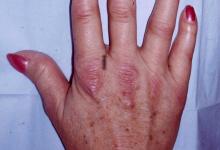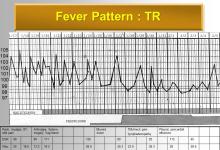Safety of Combination Targeted Therapies in Psoriatic Arthritis Save

Key Takeaways
- Clinicians have traditionally been wary about prescribing multiple targeted therapies for rheumatologic conditions for fear of increasing risk of infection.
- This study examined a large insurance claims database to ascertain the frequency of combining targeted drugs for psoriatic arthritis and rates of infection.
- Combination prescriptions were rare (1%), but no significant increase in infection risk was seen with multiple targeted drugs versus monotherapy.
Treating psoriatic arthritis (PsA) patients with more than one targeted therapy appears to be just fine, with no increased risk of serious infections, insurance claims data indicate.
Among some 53,000 patients taking targeted PsA medications for at least 3 months, the 542 who were on multiple such drugs experienced serious infections at a rate of 7.38 per 1,000 patients, compared with 13.05 per 1,000 in those on only one targeted therapy, according to Joseph Merola, MD, MMSc, of the University of Texas Southwestern Medical Center in Dallas, and colleagues.
Serious infection rates for patients on targeted drugs for at least 6 months (n=200) were 15.00 per 1,000 with multiple agents versus 11.82 with monotherapy, the group reported in JAMA Dermatology. However, neither the 3- or 6-month risk ratios came close to statistical significance (0.57 at 3 months, 95% CI 0.21-1.51; 1.27 at 6 months, 95% CI 0.41-3.91).
A second analysis using propensity matching to compare the two treatment approaches yielded very similar results, with infection risks numerically lower at 3 months and modestly higher at 6 months with multiple drugs, and the differences were not statistically significant. In that analysis, each patient using more than one targeted therapy was matched with two in the monotherapy group whose risk for infection was predicted to be similar on the basis of demographic and clinical factors.
Well over half of patients receiving combination treatment had apremilast (Otezla) as one component, and therefore these findings dovetail with previous reports indicating that this agent -- a phosphodiesterase-4 inhibitor that targets inflammatory processes, not immune function -- can be safely combined with biologics such as tumor necrosis factor (TNF) inhibitors.
But those studies, like this new one, were not randomized controlled trials. Thus, Merola and colleagues cautioned that "[f]urther studies are needed to confirm our findings in larger populations and more diverse therapy combinations."
For their study, the group pulled records from the IBM MarketScan Commercial Claims Database that covered some 85 million individuals from 2015 to 2024, identifying about 107,000 with claims indicating a PsA diagnosis. Of those, half had at least 3 consecutive months of filled prescriptions for PsA-related drugs. Besides apremilast, these included anti-TNF agents, Janus kinase (JAK) inhibitors, drugs targeting interleukins (IL) 17 and 23, abatacept (Orencia), and deucravacitinib (Sotyktu).
Just over 200 of patients receiving multiple drugs took a TNF inhibitor with apremilast; the vast majority of other patients combined apremilast with either IL-17, IL-23, or JAK inhibitors. Of the 542 patients with at least 3 months of continuous combination therapy, the median duration was 9 months (interquartile range 6.0-15.0).
Given that PsA is a lifelong condition, Merola and colleagues speculated on the reasons why the combination approach didn't last longer in patients who started it. "This may be associated with physician hesitancy in combining two or more targeted therapies for extended periods, that payers are reluctant to allow continued [combination targeted therapy], or that there may have been possible increased adverse effects," they wrote. It's also possible that use of multiple drugs was so effective in reducing symptoms that it was decided that only one agent (i.e., apremilast) was needed for maintenance, the group added.
Physician and payer "hesitancy" probably accounts, too, for the overall rarity of combination therapy in these patients, with just 1% using it for even 3 months. JAK inhibitors and most biologics come with warnings (boxed, in the case of TNF and JAK inhibitors) about infection risk when used as monotherapy, so concern about multiplying such risks with additional drugs is understandable. And most targeted drugs for PsA are still under patent, and thus expensive, making insurers reluctant to cover them in combination, especially when it's not a recognized standard of care.
Aside from the small number of patients receiving combination therapy in this analysis, the study was also limited by the sparse data on patients' overall health status in the IBM database. Also, the study didn't take into account old-line immunosuppressive drugs that patients may also have used, such as corticosteroids or methotrexate.

Disclosures
The study was supported by the Psoriasis and Psoriatic Arthritis Multicenter Advancement Network. Merola reported relationships with numerous pharmaceutical companies, as did several other authors.









If you are a health practitioner, you may Login/Register to comment.
Due to the nature of these comment forums, only health practitioners are allowed to comment at this time.